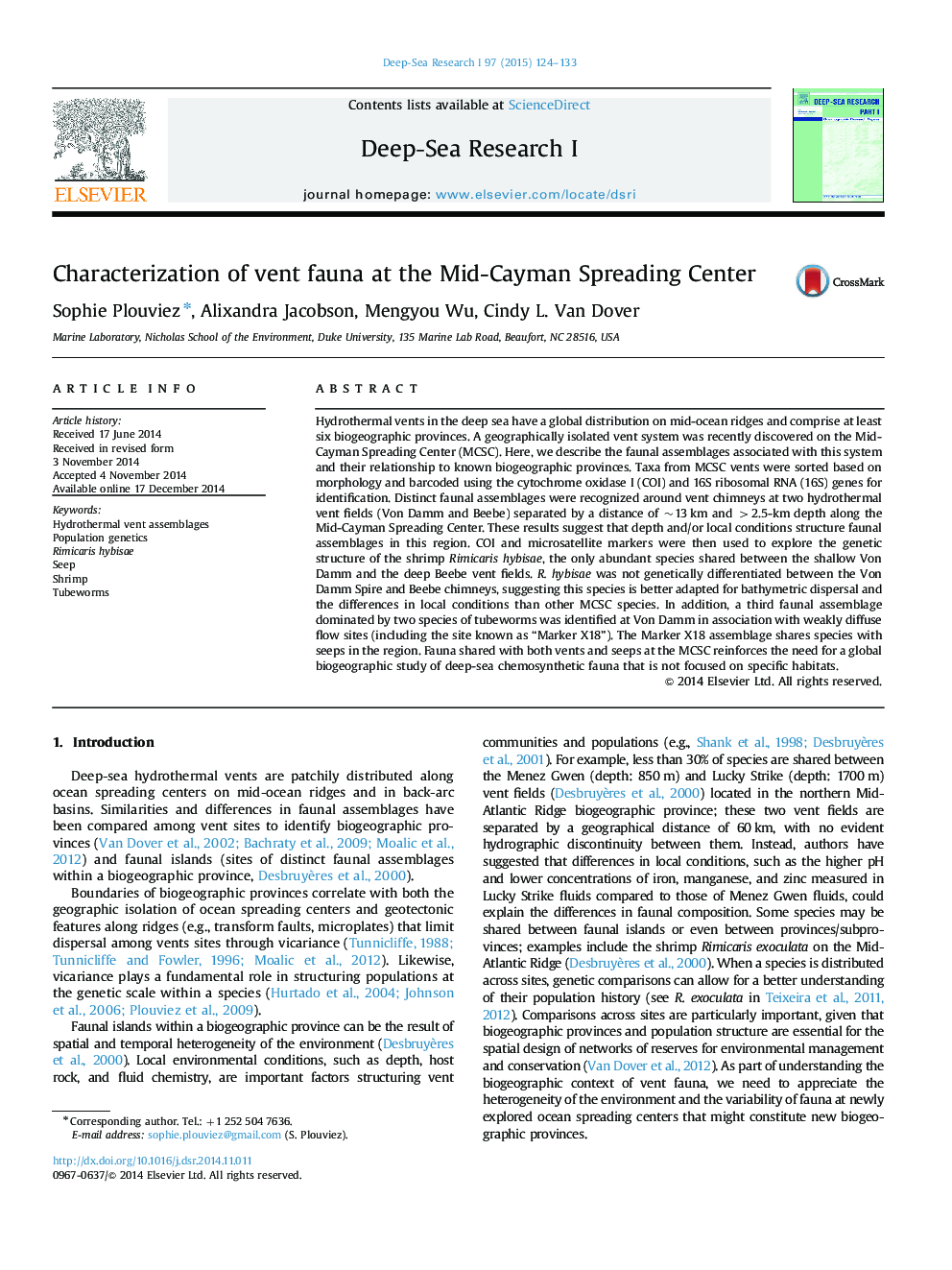| Article ID | Journal | Published Year | Pages | File Type |
|---|---|---|---|---|
| 6383565 | Deep Sea Research Part I: Oceanographic Research Papers | 2015 | 10 Pages |
â¢Mid-Cayman Spreading Center faunal assemblages were characterized.â¢Von Damm Spire, Beebe chimneys and Marker X18 have different faunal assemblages.â¢The idea of a seep/vent continuum is reinforced by fauna shared between habitats.â¢Rimicaris hybisae shrimp is the only abundant species at both Von Damm and Beebe.â¢R. hybisae is not genetically (COI, microsatellites) differentiated between sites.
Hydrothermal vents in the deep sea have a global distribution on mid-ocean ridges and comprise at least six biogeographic provinces. A geographically isolated vent system was recently discovered on the Mid-Cayman Spreading Center (MCSC). Here, we describe the faunal assemblages associated with this system and their relationship to known biogeographic provinces. Taxa from MCSC vents were sorted based on morphology and barcoded using the cytochrome oxidase I (COI) and 16S ribosomal RNA (16S) genes for identification. Distinct faunal assemblages were recognized around vent chimneys at two hydrothermal vent fields (Von Damm and Beebe) separated by a distance of ~13Â km and >2.5-km depth along the Mid-Cayman Spreading Center. These results suggest that depth and/or local conditions structure faunal assemblages in this region. COI and microsatellite markers were then used to explore the genetic structure of the shrimp Rimicaris hybisae, the only abundant species shared between the shallow Von Damm and the deep Beebe vent fields. R. hybisae was not genetically differentiated between the Von Damm Spire and Beebe chimneys, suggesting this species is better adapted for bathymetric dispersal and the differences in local conditions than other MCSC species. In addition, a third faunal assemblage dominated by two species of tubeworms was identified at Von Damm in association with weakly diffuse flow sites (including the site known as “Marker X18”). The Marker X18 assemblage shares species with seeps in the region. Fauna shared with both vents and seeps at the MCSC reinforces the need for a global biogeographic study of deep-sea chemosynthetic fauna that is not focused on specific habitats.
